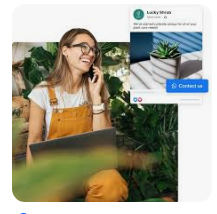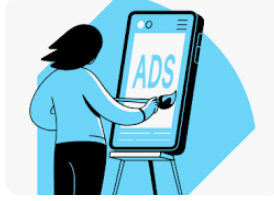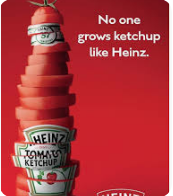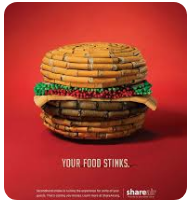How musician make money with their music video on scoial media.
Musicians can make money with their music videos on social media through various monetization strategies. While the revenue might not always come directly from views or plays, there are several ways to leverage platforms like **YouTube, TikTok, Instagram, and Facebook** to generate income. Below are some of the primary ways musicians make money with their music videos on social media:
### 1. **Ad Revenue (YouTube Partner Program)**
- **Platform:** YouTube
- **How It Works:** Musicians can monetize their music videos through YouTube’s Partner Program, which shares ad revenue generated from the ads shown before, during, or after the video.
- Musicians earn based on the **number of views** their video receives and the **engagement** from ads shown. The amount can vary depending on the type of ad and the viewer's location.
- The typical rate is based on **CPM (Cost Per Thousand Views)**, which can range from $1 to $5+ depending on the niche and audience.
- **Requirements:**
- At least **1,000 subscribers**.
- At least **4,000 watch hours** in the past 12 months.
- **Example:** A popular music video with millions of views can generate significant income from ads alone.
### 2. **Fan Donations and Crowdfunding**
- **Platforms:** YouTube (Super Chat), TikTok (Live Gifts), Patreon, Kickstarter, GoFundMe.
- **How It Works:** Fans can directly support musicians by donating money during live streams or by contributing to crowdfunding campaigns.
- **YouTube Super Chat** allows fans to donate money during live streams.
- **TikTok Live Gifts**: Musicians can earn when fans send them virtual gifts, which can be converted to real money.
- **Crowdfunding Platforms** like **Patreon** or **Kickstarter** allow musicians to set up campaigns where fans contribute funds in exchange for exclusive content, early releases, or behind-the-scenes access.
- **Example:** A musician can ask their fans for support in financing their next music video or album.
### 3. **Streaming Royalties (via Content ID and Digital Distribution)**
- **Platforms:** YouTube, TikTok, Facebook, Instagram.
- **How It Works:** Musicians can earn royalties when their music is used in videos or streams on social platforms.
- **YouTube Content ID:** Musicians can register their music with YouTube’s Content ID system, which automatically detects when their music is used in other videos. They can claim ad revenue from those videos.
- **TikTok and Instagram Reels:** Songs used in TikTok videos or Instagram Reels generate performance royalties. Distribution services like **DistroKid**, **TuneCore**, or **CD Baby** ensure the musician gets paid when their music is played on these platforms.
- **Facebook Sound Collection**: Musicians can also collect royalties when their music is used in videos across Facebook’s platform.
- **Example:** If a song goes viral on TikTok or YouTube and is used in thousands of user-generated videos, musicians can earn substantial income from content royalties.
### 4. **Brand Sponsorships and Partnerships**
- **Platforms:** Instagram, TikTok, YouTube, Facebook.
- **How It Works:** Musicians can collaborate with brands to promote products or services in their music videos, live streams, or other content.
- Brands often approach musicians with large followings or those in specific niches (e.g., hip-hop, pop) to showcase their products in videos.
- Musicians might promote gear, fashion, or lifestyle products, either within the music video itself or in additional content, like Instagram Stories or TikTok videos.
- **Example:** A musician could wear a particular clothing brand in their music video or use sponsored equipment, with the brand paying for the exposure.
### 5. **Affiliate Marketing**
- **Platforms:** YouTube, Instagram, TikTok.
- **How It Works:** Musicians can include affiliate links in the descriptions of their videos or social media profiles to earn commissions from products or services they recommend.
- When fans click the links and make a purchase, the musician receives a commission.
- This strategy is especially effective for musicians promoting gear, instruments, or software they use for creating music.
- **Example:** A musician might link to their favorite audio equipment on Amazon or other platforms, earning a small percentage of each sale made through their affiliate link.
### 6. **Merchandise Sales**
- **Platforms:** YouTube (Merch Shelf), Instagram (Shopping), Facebook, TikTok.
- **How It Works:** Musicians can sell branded merchandise, such as clothing, posters, or physical albums, directly to their audience.
- **YouTube Merch Shelf:** Musicians with a certain number of subscribers can sell merchandise directly through their video pages using platforms like Teespring.
- **Instagram Shopping:** Allows musicians to tag their merchandise in posts and stories so followers can directly purchase items.
- **TikTok and Facebook:** Musicians can promote and sell merch through direct links in their profiles or via live streams.
- **Example:** A musician can promote a new line of tour shirts or exclusive limited-edition vinyl albums, directly earning from sales.
### 7. **Concerts and Virtual Performances**
- **Platforms:** YouTube, Instagram, TikTok, Facebook.
- **How It Works:** With live streaming on platforms like **YouTube**, **Instagram**, and **Facebook**, musicians can earn money from ticketed virtual concerts or receive donations during live performances.
- Musicians can sell tickets for exclusive live streams or offer paid VIP experiences.
- Platforms like **Stageit** and **Twitch** allow musicians to monetize their performances through ticket sales and fan donations.
- **Example:** Musicians host a live concert on YouTube with ticket sales and encourage fans to donate during the performance.
### 8. **Monetization of TikTok and Reels (Influence and Challenges)**
- **Platform:** TikTok, Instagram Reels.
- **How It Works:** When musicians' songs go viral on TikTok or Instagram Reels, it can lead to massive exposure, driving not only royalty earnings (via licensing) but also brand deals, merchandise sales, and increased streaming on platforms like Spotify and Apple Music.
- Many musicians launch their own **challenges** around their music to encourage users to create videos with their tracks, further boosting song exposure and potential earnings from viral engagement.
- **Example:** A viral TikTok challenge based on a musician's song can lead to millions of user-generated videos, increasing the song's popularity and income from streaming services.
### 9. **Facebook Ad Breaks**
- **Platform:** Facebook.
- **How It Works:** Musicians who post long-form video content (3+ minutes) on Facebook can qualify for **Ad Breaks**, a program that allows ads to run in the middle of their videos. The musicians earn a share of the ad revenue.
- **Requirements:**
- 10,000 followers.
- 30,000 one-minute views on videos that are at least three minutes long.
- **Example:** A musician posts a behind-the-scenes video or a live performance on Facebook and earns money from ad breaks.
### 10. **Licensing and Sync Deals**
- **Platforms:** YouTube, Instagram, Facebook, TikTok.
- **How It Works:** Social media platforms often use licensed music in their content, providing opportunities for musicians to earn **sync licensing fees**. In some cases, social media videos can lead to licensing deals with brands, TV shows, or films.
- Music used in commercials, shows, or influencer content can generate licensing fees that are negotiated separately.
- **Example:** A brand uses a musician’s song in a sponsored video on Instagram, leading to a sync licensing deal that provides a significant payout.
---
### Conclusion
Musicians today have a wide range of opportunities to monetize their music videos on social media, from traditional ad revenue and royalties to more innovative streams like live performances, brand partnerships, and merchandise sales. By building an engaged fanbase and leveraging various social media features, musicians can create multiple income streams and boost their overall earnings.









































































Comments
Post a Comment